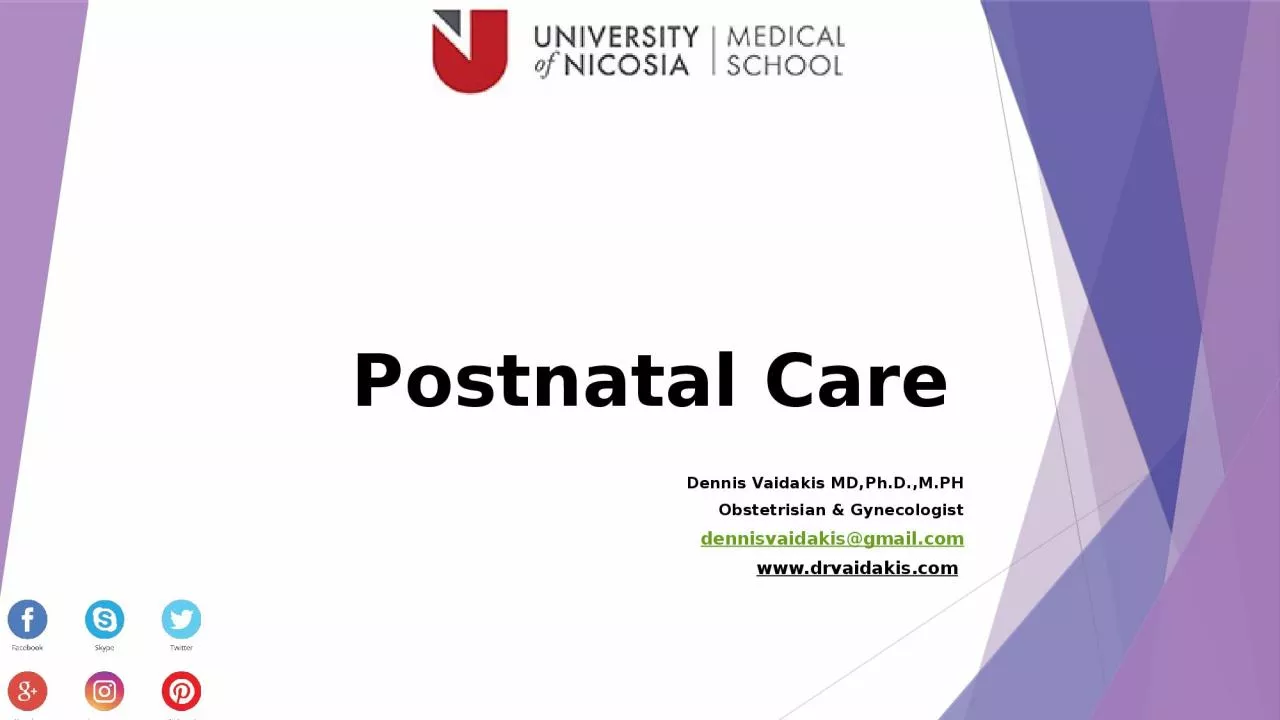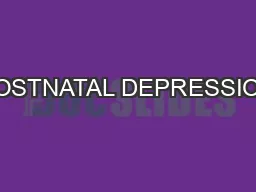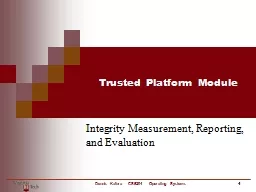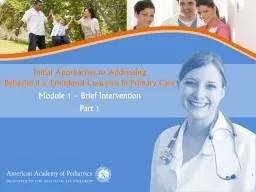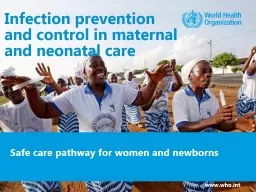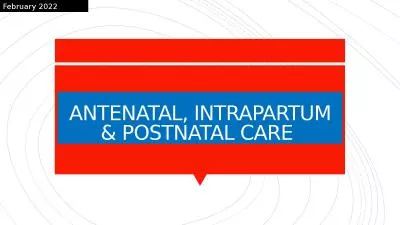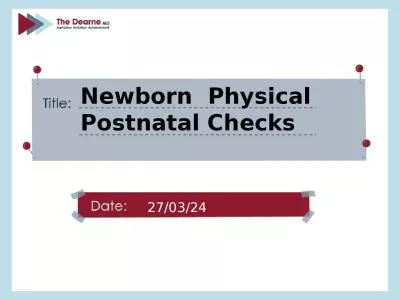PPT-Postnatal Care Dennis Vaidakis MD,Ph.D.,M.PH
Author : harper | Published Date : 2023-11-16
Obstetrisian amp Gynecologist dennisvaidakisgmailcom wwwdrvaidakiscom Postnatal Care By the end you should be able to Interview a postnatal patient about their
Presentation Embed Code
Download Presentation
Download Presentation The PPT/PDF document "Postnatal Care Dennis Vaidakis MD,Ph.D.,..." is the property of its rightful owner. Permission is granted to download and print the materials on this website for personal, non-commercial use only, and to display it on your personal computer provided you do not modify the materials and that you retain all copyright notices contained in the materials. By downloading content from our website, you accept the terms of this agreement.
Postnatal Care Dennis Vaidakis MD,Ph.D.,M.PH: Transcript
Download Rules Of Document
"Postnatal Care Dennis Vaidakis MD,Ph.D.,M.PH"The content belongs to its owner. You may download and print it for personal use, without modification, and keep all copyright notices. By downloading, you agree to these terms.
Related Documents

